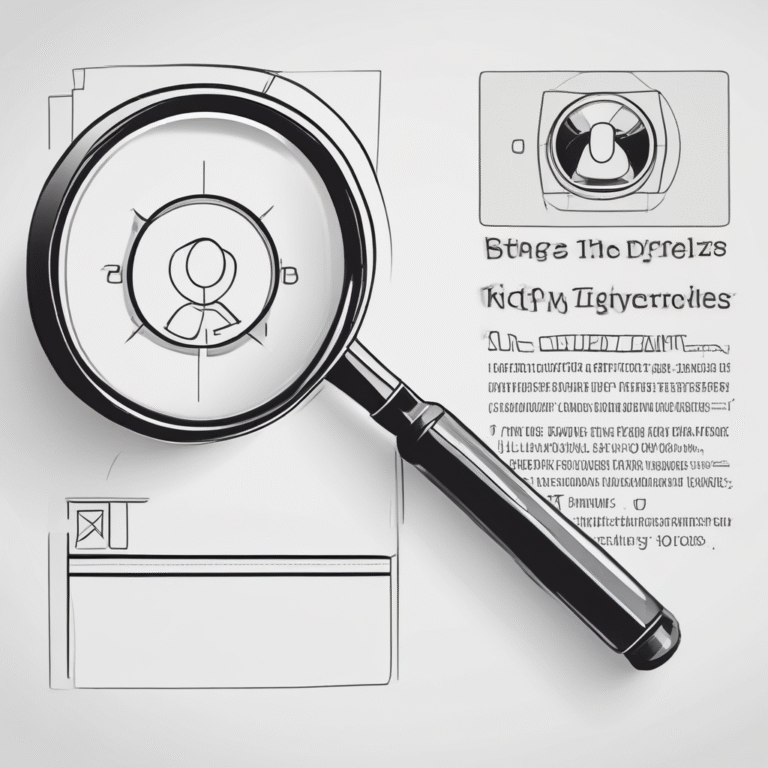As increasingly powerful artificial intelligence models emerge, so too does the urgent need to understand and manage their potential risks. This report delves into the safety policies recently established by leading AI companies, examining the core principles and common strategies they employ to prevent unintended harm. By analyzing these cutting-edge initiatives, we aim to illuminate the industry’s current best practices in AI risk management, revealing how developers are working to ensure that these transformative technologies are deployed safely and responsibly. This exploration provides valuable insights for policymakers, researchers, and anyone seeking to understand the crucial work being done to shape a safer AI future.
What is the overall purpose and scope of the study
This document presents an analysis of common elements found across twelve currently published frontier AI safety policies. These policies, established by leading AI companies, are protocols designed to mitigate the risks associated with developing and deploying state-of-the-art AI models, aiming to maintain these risks at an acceptable level. This analysis builds upon previous work, investigating whether the nine additional policies published beyond the initial set of Anthropic, OpenAI, and Google DeepMind incorporate the same key components initially identified. Ultimately, the report seeks to offer insights into current best practices for managing severe AI risks by analyzing these shared elements within the context of background information and actual policy excerpts. The study aims to foster a deeper understanding of how the AI industry approaches the critical task of ensuring the safe and responsible advancement of frontier AI technology.
The scope of the study encompasses a detailed examination of several critical components found in the safety policies. These components include capability thresholds which define points at which specific AI capabilities would pose severe risks and necessitate new mitigation strategies. Model weight security is also examined, specifically the information security measures intended to prevent unauthorized access to model weights. The study further investigates model deployment mitigations – access and model-level measures designed to prevent the misuse of dangerous AI capabilities. Conditions for halting both deployment and development plans are also analyzed, focusing on companies’ commitments to cease activity if concerning AI capabilities emerge before adequate mitigations are in place. The thoroughness of capability elicitation during model evaluations is also investigated, along with the specified timing and frequency of these evaluations. Finally, the study delves into accountability mechanisms, specifically internal and external oversight mechanisms aimed at encouraging proper execution of the safety policies, and the declared intention to update policies over time as understanding of AI risks evolves.
Policy Nuances
While aiming for a comprehensive view of the common elements, the study also acknowledges the unique approaches and differences found in each individual safety policy. Certain policies emphasize domain-specific risks, like Nvidia’s and Cohere’s focus on specific applications, rather than solely focusing on the potential for catastrophic harm. Similarly, the study acknowledges nuances in different evaluation methods, where some policies heavily rely on quantitative benchmarks, while others prioritize qualitative assessments. Recognizing these variations, the analysis presents a holistic understanding of the various strategies employed by AI developers, providing valuable insights into the current state of safety practices in the realm of frontier AI.
What is the need for describing the common components of safety policies
The proliferation of frontier AI safety policies among leading AI developers underscores a shared recognition of the potential risks associated with increasingly capable AI models. Describing the common components of these policies serves as a crucial step in fostering a collective understanding of the current state of AI risk management. By identifying the shared elements, such as capability thresholds, model weight security, deployment mitigations, and evaluation strategies, we can begin to establish a baseline for responsible AI development and deployment. This understanding enables stakeholders, including policymakers, researchers, and the public, to critically assess the comprehensiveness and rigor of individual policies and to identify gaps or areas where further refinement is needed. Such comparative analysis can significantly inform the ongoing dialogue about AI safety and help drive the development of more robust and effective safety measures.
Why common language matters.
Moreover, a clear articulation of the common components helps promote consistency and interoperability across different AI development efforts. While each policy may reflect a unique approach to AI risk management, a shared vocabulary and understanding of core concepts can facilitate collaboration and knowledge sharing among developers. This is particularly important given the global nature of AI research and the need for coordinated action to address potential risks. A standardized framework allows for a clearer comparison of different approaches, highlighting best practices and facilitating the adoption of more effective risk mitigation strategies across the industry. It avoids re-invention and makes it easier to use different organizations outputs.
Finally, documenting and disseminating these common components provides a valuable resource for organizations that are just beginning to formulate their own AI safety policies. By providing a clear overview of the essential elements, it lowers the barrier to entry for organizations seeking to adopt responsible AI development practices. This is especially important for smaller or less well-resourced organizations that may not have the expertise or resources to develop comprehensive policies from scratch. Providing a well-defined structure, including common elements and a rationale, ensures that the industry evolves towards safer development practices overall.
What criteria define potentially severe risks related to AI models
The analysis of frontier AI safety policies reveals that several criteria are consistently used to define potentially severe risks associated with these advanced models. These criteria generally revolve around the capabilities of the models themselves, specifically their potential for misuse and the resulting impact. A key element is the establishment of *capability thresholds*, which signify specific levels of AI functionality that, if attained, would pose a significant risk and necessitate the implementation of robust mitigation strategies. These thresholds are often benchmarked against plausible threat models, which describe prospective scenarios where the AI could be exploited to cause considerable harm. For instance, exceeding a predefined capability threshold in a biological domain could indicate the AI’s potential to facilitate the development of biological weapons, triggering stringent security protocols.
Furthermore, these safety policies commonly emphasize the importance of threat models to determine capability thresholds. These commonly include assistance in the development of biological weapons, the orchestration or enhancement of cyberoffenses, and the automation of AI research and development, which could accelerate the proliferation of potentially dangerous AI capabilities. Evaluations of these models are frequently designed to consider enabling capabilities, such as automated AI research and development, tool usage, or prompt engineering, that might increase the potential misuse cases beyond the capabilities of the baseline model. This includes assessing the model’s proficiency in specific tasks relevant to these threat models, accounting for potential post-training enhancements like fine-tuning, code execution, tool usage, or web searching to ensure the evaluation captures the full potential of the model.
Risk Assessment Methodologies
Another crucial aspect of defining potentially severe risks is the ongoing evaluation and monitoring of AI models throughout their lifecycle. This entails not only pre-deployment assessments but also continuous evaluations during training and post-deployment monitoring to detect any emergent capabilities or vulnerabilities. The frequency and intensity of these evaluations are often determined by the rate of progress in model capabilities, with more frequent assessments triggered by significant advances or algorithmic breakthroughs. The establishment of precise indicators and alert thresholds, which are regularly reviewed and updated based on evolving risks and mitigation advancements, is a crucial element in defining a potentially higher risk that prompts an increased focus on identifying and addressing potentially dangerous capabilities. This proactive approach ensures that potential risks are identified and addressed promptly, preventing deployment before appropriate safeguards are in place, and halting development if necessary safety measures cannot be implemented.
What measures are taken to prevent unauthorized access to the model weights
A critical component of frontier AI safety policies involves robust measures designed to prevent unauthorized access to model weights. The consensus across the examined policies is that as AI models develop capabilities of concern, progressively stronger information security measures are essential to prevent both theft and unintentional releases. This emphasis stems from the recognition that malicious actors acquiring model weights could misuse them to inflict severe harm. The sophistication of potential threat actors varies, spanning from opportunistic hackers to highly resourced nation-state operations, necessitating a multi-layered approach to security protocols.
Escalating Security Measures
The specific security measures are usually implemented in escalating tiers, commensurate with a model’s capabilities and perceived risk. These tiers often align with existing frameworks providing levels of recommended security controls. For instance, specific controls might include stringent access restrictions, enhanced logging and monitoring, advanced perimeter security controls, endpoint detection and response systems, and the application of multi-factor authentication across the development environment. Advanced security red-teaming is often utilized to simulate attacks, testing the robustness of existing safeguards. Data protection measures, such as encryption and the use of hardware security tokens, are also common for safeguarding model data and intermediate checkpoints. Many policies stress the importance of internal compartmentalization to restrict access to LLM training environments, code, and parameters only to authorized personnel with appropriate clearance levels. Model weights are often stored in isolated networks that meet stringent security requirements.
Several AI developers reference the RAND Corporation’s report, “Securing AI Model Weights”. Companies adopt principles described in that framework, with specific guidance on the level of security recommended for models with certain capabilities. Emphasis is placed on adherence to industry-standard security frameworks and practices, such as the MITRE ATT&CK framework, and risk governance best practices. Furthermore, these policies aim to ensure equivalent levels of assurance even when models are deployed in third-party environments with potentially different security safeguards. If adequate mitigations cannot be promptly implemented, policies dictate pausing model development to avoid the progression of potentially harmful capabilities without a secure environment in place. The effectiveness of deployment mitigations relies on models remaining securely in the possession of authorized developers, thus emphasizing the importance of information security measures. The overriding aim is to safeguard these powerful AI systems from potential misuse by hostile entities who might seek to exploit their advanced features for nefarious purposes.
What deployment strategies are employed to reduce the risks of dangerous AI capabilities
Frontier AI safety policies emphasize a layered approach to mitigating risks associated with deployment. These strategies span a range of techniques, from training models to refuse harmful requests to more sophisticated output monitoring and adversarial training. The underlying principle is that protective measures should scale proportionally with the potential harm a model could cause. As models become more powerful and capable, they inevitably attract more determined and resource-rich attempts to circumvent restrictions or exploit their abilities. Therefore, initial methods such as basic harm refusal are complemented by expert and automated red-teaming to identify and address potential vulnerabilities before deployment. Continuous monitoring post-deployment is also crucial to detect and remediate any compromises or jailbreaks that might emerge.
Many frontier AI safety policies incorporate specific deployment mitigation strategies based on clearly defined capability thresholds. Upon reaching a critical threshold, various measures are activated, often involving a combination of containment and risk reduction strategies. These might include severely limiting access to a model or its functionalities, deploying the model only within highly restricted environments, and significantly increasing the priority of information and cybersecurity controls. Some companies use techniques such as fine-tuning models to reject harmful queries, employing output safety classifiers, and implementing continuous monitoring to detect and address misuse of a model. Additionally, many recognize the need for rapid remediation, through fast vulnerability patching, escalation to law enforcement when necessary, and strict log retention. Ultimately, many commit to not deploying frontier models if they exceed pre-defined risk thresholds until appropriate safeguards are found and are demonstrably effective.
Specific Tactics for High-Risk Models
For models exhibiting significant potential for misuse, deployment strategies often involve establishing criteria for sharing versions of the model with reduced safeguards with a select group of trusted users. These users are generally subject to stringent vetting processes, secure access controls, close monitoring, strict log retention policies, and well-defined incident response protocols. Additionally, frameworks outline conditions for halting deployment plans altogether if sufficient mitigations are not in place. For instance, if an AI model demonstrates potentially dangerous capabilities before necessary safeguards can be implemented, further deployment is paused until those safety measures are effectively in place and demonstrably robust. Each of these methods combines to reduce a model’s risk during deployment dramatically.
What are the conditions for restricting model development plans
Frontier AI safety policies acknowledge that there are circumstances where continued model development poses unacceptable risks, necessitating a halt to further progress. This section explores the conditions that trigger commitments to restrict or pause model development plans. These conditions are generally tied to the emergence of specific AI capabilities that raise serious concerns about potential misuse, coupled with an inability to adequately mitigate those risks through security measures or other safeguards. The core principle underlying these conditions is the need to prevent further advancement of models that could cause catastrophic harm if their capabilities outpace the development and implementation of sufficient protective measures.
One primary condition for halting development centers on situations where a model crosses pre-defined capability thresholds related to hazardous potential. For example, if a model demonstrates a marked ability to facilitate the development of biological weapons or execute complex cyberattacks, and corresponding security protocols to prevent model weight theft are deemed insufficient, development will be paused. Another trigger involves the identification of significant model misalignment during the training process, even if external deployment is not imminent. This necessitates an immediate cessation of development to address the core alignment issues before further capabilities are cultivated. The determination of whether adequate mitigations are possible often entails a rigorous evaluation process.
Determining Sufficiency of Mitigations
The determination of whether adequate mitigations can be implemented is a case-by-case judgement, but some guiding principals can be drawn from how it is approached in existing safety policies. It frequently requires a reevaluation of current planned security protocols to decide if the demonstrated increase in capability also represents a greater risk. Furthermore, safety enhancement development (not capability development) may continue during the pause. Such an action might include targeted development, such as fine-tuning or safety training. Ultimately, the policies reflect a commitment to prioritizing safety, acknowledging that the rapid advancement of AI capabilities must be carefully managed to prevent unintended and potentially devastating consequences.
How can the analysis of the full model capabilities improve the evaluation process
Analyzing the full range of a model’s capabilities, rather than focusing solely on expected or intended functionalities, significantly enhances the evaluation process by revealing potential risks associated with misuse or unintended consequences. Ignoring the full capabilities can lead to a gross underestimation of the true risk profile, as capabilities can emerge in unexpected ways, especially through techniques like prompt engineering, fine-tuning, or the use of external tools. By actively attempting to elicit a model’s capabilities—including scenarios where it might be used maliciously—evaluators can gain a more realistic understanding of the potential harm it could cause. This comprehensive approach to capability discovery provides a stronger foundation for developing targeted safety measures and mitigation strategies.
Furthermore, understanding the full capabilities of a model allows for more proactive mitigation development. When evaluations consider potential areas of misuse, developers can design safeguards that specifically target these vulnerabilities before they are exploited. For instance, evaluating a model’s ability to assist in cyberattacks allows for the implementation of defenses that prevent the model from generating malicious code or identifying vulnerabilities. Similarly, understanding a model’s potential to automate AI research enables proactive monitoring and safeguards to prevent unsafe development practices. This forward-looking approach ensures that safety measures are aligned with the model’s potential impact, reducing the likelihood of harmful outcomes.
Improving Robustness via Capability Elicitation
The process of eliciting full model capabilities also inherently strengthens robustness testing. By stress-testing the model with challenging prompts, adversarial inputs, simulating advanced knowledge through fine-tuning, and incorporating potential tool use, developers can identify weaknesses in existing safety measures and refine them accordingly. This robust evaluation process ensures safety mechanisms are less susceptible to circumvention, as potential weaknesses have already been identified and addressed during the evaluation phase. Moreover, this provides the ability to create a more comprehensive and detailed threat model. The information produced from capability elicitation helps developers construct pathways malicious actors might take, and provides insight into the safeguards best suited to stopping them.
How do these policies establish the mechanisms for oversight in the frontier AI context
The frontier AI safety policies commonly incorporate accountability mechanisms, designed to ensure the proper execution of the standards outlined within each framework. These mechanisms aim to foster both internal governance and external engagement. Internal governance frequently involves designating specific roles and responsibilities for overseeing the implementation of safety policies. Such oversight may be handled by specialized individuals, like a “Responsible Scaling Officer,” internal teams, or governing bodies that are tasked with monitoring policy adherence and evaluating associated risks. Compliance is further reinforced through internal safety procedures for relevant incident scenarios, clear communication plans among different teams, internal reviews, and the establishment of processes for reporting policy breaches, often allowing for anonymous reporting.
Beyond internal controls, several policies emphasize transparency and external input as essential components of accountability. This may include making key risk-related information publicly available, such as evaluation methodologies, summaries of risk assessments, and responses to identified instances of non-compliance. Expert input from external entities is pursued via consultation for conducting assessments and evaluating both capability thresholds and associated mitigations. Moreover, certain policies outline proactive engagement with government agencies, indicating an intention to share relevant information regarding models that reach critical capability levels warranting more stringent protections and demonstrate a commitment to working with the developing regulatory landscape. Some organizations commit to third-party procedural compliance reviews to evaluate policy consistency, with third parties auditing the evaluation process to improve accuracy and fairness in results.
Implementation Details
While the high-level intentions appear consistent across many of these policies, the specifics of external validation and transparency measures demonstrate a notable range. The depth and breadth of transparency vary substantially, with some organizations committing to detailed public disclosure of key assessments, while others focus on providing more general insights. Although the commitment to independent auditing is promising, the concrete details of how these audits are structured, implemented, and acted upon remain largely undefined. These accountability measures, while showing a positive trend towards increased oversight in the frontier AI context, will likely need to evolve and mature as companies continue to grapple with the complex challenges of this developing field.
How often and according to what parameters are the safety policies updated
Frontier AI safety policies are not static documents; rather, they are designed to evolve alongside the rapid advancements in AI capabilities and the increasing understanding of associated risks. All twelve companies with published safety policies express intentions to update their protocols periodically. This commitment acknowledges that the empirical study of catastrophic risks from frontier AI models is still in its early stages, and current estimates of risk levels and thresholds are subject to refinement based on ongoing research, incident reports, and observed misuse. The continuous monitoring of relevant research developments is thus crucial for identifying emerging or understudied threats that necessitate adjustments to existing safety frameworks.
The parameters for triggering updates vary somewhat across policies, but generally include significant capability changes in AI models and advancements in the science of evaluation and risk mitigation. OpenAI, for instance, indicates updates are triggered whenever there is a greater than 2x increase in effective compute or a major algorithmic breakthrough. Other companies mention routinely testing models to determine whether their capabilities fall significantly below Capability Thresholds and that a timeline will inform updates (such as Amazon) and Naver who evaluates systems quarterly (or sooner based on metric increases). This framework recognizes that, in certain areas, it may be beneficial to concretize commitments further. Policy updates are often approved by the board of directors as well as a number of subject matter and governance experts.
Policy Changes and Implementation
The process of updating policies involves several key steps. Proposed changes typically originate from internal stakeholders, such as the CEO, Responsible Scaling Officer, or Frontier AI Governance Board consisting of subject matter experts. These proposals are then subject to review and approval by higher governance bodies, such as the Board of Directors or Executive Leadership Committee. Many policies also incorporate external feedback and benchmarking against industry standards to ensure that practices remain aligned with evolving global frameworks. To maintain transparency, companies often commit to publishing updated versions of their policies, along with change logs detailing the modifications made and the rationale behind them. These updates facilitate ongoing dialogue with stakeholders and foster a shared understanding of the evolving landscape of AI safety.
Capability Thresholds
Descriptions of AI capability levels which would pose severe risk and require new robust mitigations are a core element within the landscape of frontier AI safety policies. Most policies studied meticulously define dangerous capability thresholds, using these as benchmarks against the results of model evaluations to ascertain if those critical levels have been breached. Anthropic’s Responsible Scaling Policy, for example, uses the concepts of Capability Thresholds and Required Safeguards, specifying thresholds related to CBRN weapons and autonomous AI R&D and identifying the corresponding Required Safeguards intended to mitigate risk to acceptable levels. OpenAI’s Preparedness Framework establishes a gradation scale for tracked risk categories, ranging from ‘low’ to ‘critical’, enabling proactive application of tailored mitigations as threats escalate. Google DeepMind’s Frontier Safety Framework outlines two sets of Critical Capability Levels (CCLs): misuse CCLs indicating heightened risk of severe harm from misuse and deceptive alignment CCLs indicating heightened risk of deceptive alignment-related events.
Across the board, these capability thresholds are intrinsically linked to underlying threat models, which are plausible pathways by which frontier systems may lead to catastrophic harm. Some of the most commonly covered threat models include: biological weapons assistance, where AI models could aid malicious actors in developing catastrophic biological weapons; cyberoffense, where AI models could empower actors to automate or enhance cyberattacks; and automated AI research and development, where AI models could accelerate AI development at an expert human level. Other capabilities considered, though not universally, include autonomous replication, advanced persuasion, and deceptive alignment. These threat models and capability thresholds help to align AI safety policies with proactive risk management strategies
Notably, there are deviations in approaches to risk, with some policies, such as Nvidia’s and Cohere’s frameworks, placing more emphasis on domain-specific risks as opposed to merely targeting catastrophic risks. Furthermore, xAI and Magic’s safety policies stand out by heavily weighting quantitative benchmarks when evaluating their models, a departure from most of their counterparts. Irrespective of these unique nuances, common themes prevail: all frontier safety policies reflect a clear focus on identifying and managing AI capabilities that could represent material harm. Whether through detailed frameworks, specific mitigation strategies, threat modelling, or stringent testing and auditing, they all aim to mitigate the risks of advanced Artificial Intelligence systems.
This analysis reveals a landscape of emerging best practices in AI safety, as leading developers grapple with the profound challenges posed by increasingly capable systems. While nuances exist in approach and emphasis, a common architecture emerges, built upon capability thresholds, robust security, layered deployment strategies, and continuous evaluation. The commitment to proactively adapting these policies underscores a vital understanding: ensuring AI’s beneficial future demands constant vigilance, rigorous assessment, and a willingness to adapt as we navigate this uncharted territory. Although the specific implementation of oversight mechanisms and transparency efforts varies, the clear trend toward greater accountability suggests a maturing field earnestly striving to meet its responsibilities. The consistent dedication to updating policies in response to both algorithmic advancements and a deeper comprehension of potential harms reinforces the iterative and evolving nature of AI safety itself.










